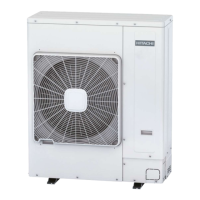3 Piping work and
refrigerant charge
53
SMGB0064 rev.0 - 08/2011
3
C A U T I O N
• When inserting a pipe through any hole protect the end with a cap.
• Do not put pipes on the ground directly without a cap or vinyl tape at the end of the pipe
Correct Incorrect
• If the piping installation is not completed until the next day or even over a longer period of time, braze off the ends of the
piping and charge the pipe with oxygen-free nitrogen through a Schrader-valve-type access-tting, to prevent moisture
and particle contamination entering.
• Do not use insulation material that contents NH3. NH3 can damage the cooper pipe material and can be a source of
future leakages.
Insulation
Attach the pipe insulation to each branch using vinyl tape. Attach also insulation to eld supplied pipes in order to prevent
the capacity decrease according to the ambient air conditions and dewing on the low pressure pipe surface.
1. Cap.
2. Field supplied insulation.
3. Do not make a gap.
N O T E
When polyethylene foam is applied, it is recommended the
usage of a wall thickness of 10 mm for the liquid piping and
15 mm to 20 m for the gas piping.
C A U T I O N
• Perform the insulation work after the pipe surface temperature decreases to the room temperature, if not the
insulation material may melt.
• If the ends of the piping system are open after ending the piping work, attach caps or vinyl bags securely to
the ends of the piping, avoiding moisture and dust entering.

